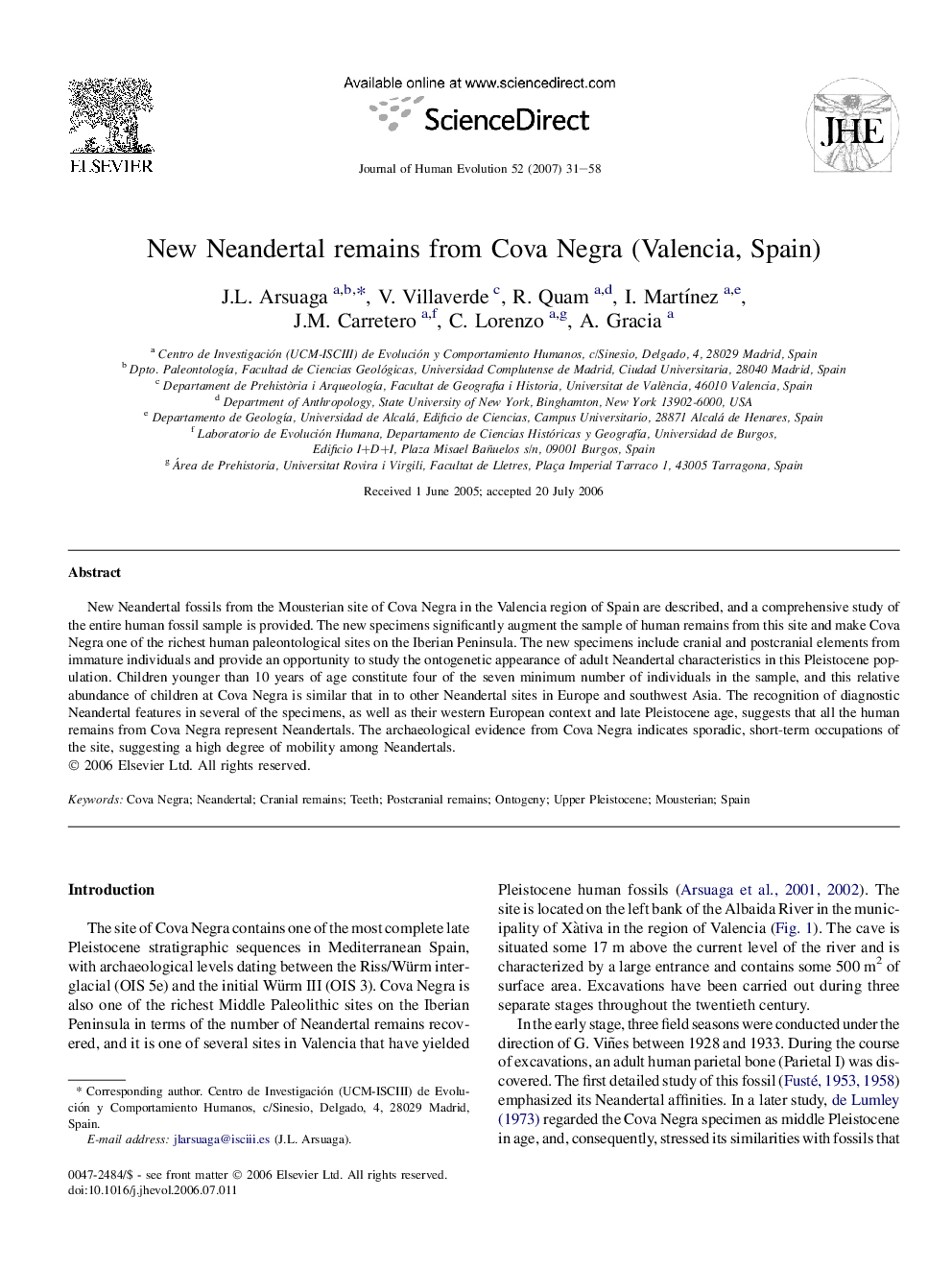| Article ID | Journal | Published Year | Pages | File Type |
|---|---|---|---|---|
| 4557426 | Journal of Human Evolution | 2007 | 28 Pages |
New Neandertal fossils from the Mousterian site of Cova Negra in the Valencia region of Spain are described, and a comprehensive study of the entire human fossil sample is provided. The new specimens significantly augment the sample of human remains from this site and make Cova Negra one of the richest human paleontological sites on the Iberian Peninsula. The new specimens include cranial and postcranial elements from immature individuals and provide an opportunity to study the ontogenetic appearance of adult Neandertal characteristics in this Pleistocene population. Children younger than 10 years of age constitute four of the seven minimum number of individuals in the sample, and this relative abundance of children at Cova Negra is similar that in to other Neandertal sites in Europe and southwest Asia. The recognition of diagnostic Neandertal features in several of the specimens, as well as their western European context and late Pleistocene age, suggests that all the human remains from Cova Negra represent Neandertals. The archaeological evidence from Cova Negra indicates sporadic, short-term occupations of the site, suggesting a high degree of mobility among Neandertals.
